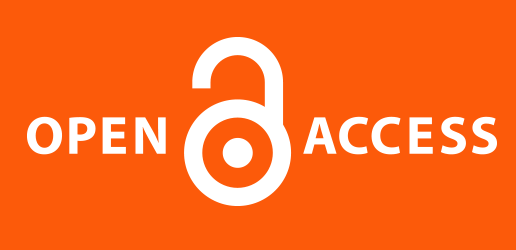
Practice exploration of university English teaching mode reform in the era of intelligent education
摘要
This paper explores the practices and outcomes of university English teaching model reforms in the era of smart education. The study shows that by introducing innovative teaching methods such as flipped classrooms, project-based learning, and blended learning, students' interest in learning and language proficiency have significantly improved. At the same time, the application of smart classrooms and online learning platforms has provided students with more flexible learning options. However, challenges remain, including technical compatibility issues and differences in student adaptability. Despite these challenges, smart education offers new opportunities for university English teaching, but further efforts are needed to address technical and adaptability issues to promote comprehensive teaching model reforms.
Introduction
With the rapid development of information technology, especially the widespread application of the Internet, big data, and artificial intelligence, the era of smart education has quietly arrived. The arrival of this era brings unprecedented opportunities and challenges to higher education. Under the impetus of smart education, traditional educational models are undergoing profound changes, particularly in university English teaching. Smart education emphasizes student-centered approaches, fully utilizing modern information technology to achieve personalized, interactive, and flexible instruction, breaking down barriers of time and space, and significantly transforming teaching content and methods. Educational informatization not only optimizes the allocation of teaching resources but also promotes the updating of teaching philosophies, driving university English teaching from traditional classroom lectures towards diversified and intelligent models.
1 Literature review
1.1 Domestic and foreign research status
As smart education continues to develop, research on smart education and university English teaching model reforms is gradually increasing both domestically and internationally. Research abroad started earlier, especially in the field of university English teaching, where more and more studies focus on the impact of information technology on classroom instruction. The application of intelligent learning platforms and big data analysis helps teachers provide personalized teaching to students and monitor their learning progress in real-time through technical means, adjusting teaching strategies as needed[1].
Domestic research started relatively late, but with the implementation of the "Internet + Education" policy, smart education has gradually been promoted in universities. Many institutions have integrated information technology into college English teaching, using online learning systems and intelligent teaching platforms to enhance teaching effectiveness. Despite some progress, much of the research remains at the technical application level, without delving deeply into changes in teaching methods, teacher roles, and student learning experiences. Future research should focus on the effective integration of technology and teaching, promoting personalized and precise education[2].
1.2 Theory and practice of intelligent education
The core concept of smart education is to reconstruct traditional educational models through the integration of modern information technology, driving comprehensive changes in teaching content, methods, and evaluation approaches. Constructivist learning theory and collaborative learning theory form its theoretical foundation. Constructivism emphasizes that students actively construct knowledge through interaction, while smart education stimulates students' motivation and initiative by providing rich learning resources and environments.
The theory of collaborative learning emphasizes the promotion of deep understanding through interaction among students. The information technology in intelligent education provides students with a wider range of interactive opportunities, especially in college English teaching, through online discussion and network collaboration, which improves students' language expression ability.
In practice, smart education is reflected in the widespread application of intelligent classrooms and online learning platforms. In college English teaching, smart education makes instruction more flexible and personalized, allowing teachers to adjust according to student progress, while students can learn independently through online platforms. However, smart education also faces issues such as inadequate technical infrastructure and insufficient teacher technical skills[3].
1.3 Research progress on the reform of college english teaching mode
As smart education advances, the reform of college English teaching models is gradually gaining attention. Traditional teaching models emphasize teacher-led instruction, whereas modern models focus more on student-centered approaches, encouraging self-directed learning and innovative thinking. New teaching models such as flipped classrooms, blended learning, and online learning platforms have become at the core of these reforms[4].
Flipped classroom moves traditional teaching content to the outside of class, using class time for interaction and practice to help students consolidate knowledge and improve language skills. Blended learning combines face-to-face instruction with online learning, allowing students to study independently through online platforms and participate in class discussions, breaking the constraints of time and space, and enhancing the flexibility of learning.
Online learning platforms, as an essential part of smart education, are widely used in college English teaching. These platforms enable students to access learning resources at any time and participate in personalized learning. Nevertheless, how to optimize platform functions and increase student engagement remains a key focus of current research[5].
2 Theoretical basis and research methods
2.1 Theoretical principle
This study is based on multiple educational theory frameworks, aiming to provide theoretical guidance for the reform of college English teaching models in the era of smart education. Constructivist learning theory emphasizes that students actively build their own knowledge systems during the learning process. Smart education platforms offer abundant learning resources and interactive opportunities, promoting independent exploration and collaborative learning among students. In college English teaching, this theory supports personalized learning, helping students choose suitable learning content according to their own needs.
The blended learning theory posits that online and offline classrooms should complement each other to create synergistic effects. Smart education leverages the strengths of traditional classrooms and online learning platforms, enabling students to enhance their language skills outside of class and engage in interactive and practical activities during class time. This model can flexibly address the diverse learning needs and paces of students, thereby improving their language proficiency.
Social and cultural theories indicate that language learning is a process of social interaction, where students enhance their language skills through collaboration and communication with others. In the context of smart education, social learning platforms provide students with opportunities to interact with peers, teachers, and external resources, thereby improving the effectiveness of language learning. By integrating these theories, this study offers scientific guidance for the reform of college English teaching models, promoting students' learning and skill development through interaction.
2.2 Research technique
This study employs a comprehensive research method that combines qualitative and quantitative analysis to comprehensively evaluate the implementation effects of university English teaching model reforms in the era of smart education. The research design clearly defines the subjects, selecting university English courses from a certain higher education institution as samples, covering multiple disciplines and grades to ensure the representativeness of the sample.
In terms of data collection, this study employed three methods: questionnaire surveys, classroom observations, and interviews. The questionnaire surveys gathered feedback from students and teachers on the reform of college English teaching under the smart education framework, focusing on students 'learning experiences, participation, learning outcomes, as well as teachers' teaching strategies and technology applications. Classroom observations recorded interactions between students and teachers in real-time, aiding in obtaining firsthand data. Interviews further explored students 'and teachers' attitudes, challenges, and expectations regarding the new teaching model.
In terms of data analysis, the study employs a combination of quantitative and qualitative methods. Quantitative analysis involves statistical processing of questionnaire data to examine students' learning outcomes and satisfaction under different teaching models; qualitative analysis involves analyzing classroom observations and interview materials to gain a deeper understanding of issues and challenges in the reform of teaching models. By integrating these two analytical approaches, the study provides systematic evaluation and theoretical support for the reform of college English teaching models in the era of smart education.
3 Practice of university english teaching mode reform under the background of intelligent education
3.1 The implementation of teaching mode reform
In the context of smart education, the reform of university English teaching models faces a series of opportunities and challenges. Course design, as the starting point of this reform, first needs to break through traditional teaching models. Based on the concept of smart education, adjustments to course content and teaching objectives are particularly important. Smart education emphasizes personalized learning and resource sharing, which requires English course design to focus not only on language knowledge transmission but also on integrating students 'comprehensive qualities such as autonomous learning ability, critical thinking, and cross-cultural communication skills. The setting of course content places greater emphasis on practicality and interactivity; teachers are no longer mere transmitters of knowledge but guides and supporters of learning. Teaching objectives are no longer limited to language skill training but also include the cultivation of students' overall abilities, such as language application and problem-solving skills.
In terms of innovative teaching methods, smart education offers a wealth of options for college English instruction. The flipped classroom, as a typical new teaching approach, focuses on students completing foundational knowledge outside of class, while class time is dedicated to interaction, discussion, and practice between teachers and students. Through this model, students can acquire language fundamentals through self-study and enhance their practical language skills through activities such as problem discussions and role-playing in class. Project-based learning and collaborative learning have also been widely adopted. Project-based learning integrates language learning with real-world tasks, where students learn language by completing specific project tasks, thereby improving their practical application skills. Collaborative learning emphasizes interaction and cooperation among students, fostering teamwork and promoting the acquisition of knowledge and language proficiency within a group.
Technical support is a core element in the reform of university English teaching models under the background of smart education. The application of smart classrooms, online learning platforms, and learning management systems has significantly enhanced teaching efficiency and effectiveness. Smart classrooms leverage modern information technology, such as multimedia equipment and interactive whiteboards, to achieve an organic combination of traditional classrooms and virtual learning environments. In these classrooms, teachers can monitor students 'learning status in real-time, adjust teaching progress promptly, and provide personalized guidance. Online learning platforms offer students the space for self-directed learning, allowing them to access teaching resources at any time, participate in online discussions, and submit assignments, thereby enhancing the flexibility and autonomy of learning. Learning management systems use data analysis functions to help teachers understand students' learning progress and mastery levels, thus enabling precise teaching and personalized tutoring.
In order to evaluate the effect of teaching mode reform, we conducted a questionnaire survey and classroom observation, collected feedback from students and teachers, and analyzed the data. The following is part of the data on students' learning effect after the implementation of the reform.
Table 1 Evaluation of students' learning effect
| Student categories | Learning interest increased (%) | Language skills improvement (%) | Improvement of cooperation ability (%) |
| Be positive | 85 | 88 | 90 |
| Study medium type | 70 | 75 | 80 |
| Learn to be negative | 55 | 60 | 65 |
Table 1 shows the learning outcomes of different types of students under the new teaching model. It can be seen that the learning interest, language skills, and cooperative abilities of proactive learners have significantly improved, while those of average and passive learners have shown relatively smaller changes. The new teaching model has particularly had a positive impact on actively participating students, enhancing their motivation to learn and their spirit of cooperation.
3.2 The implementation effect of teaching mode reform
In terms of the implementation effects of teaching model reform, it is first necessary to evaluate students 'learning outcomes. According to survey data, students' interest in learning, language skills, and cooperative abilities have significantly improved under the new model. Especially in collaborative learning and project-based learning segments, students 'language application skills have been enhanced, particularly in actual communication where their expression and problem-solving abilities have improved. The implementation of flipped classrooms has also cultivated students' proactive learning awareness and self-management skills, enabling them to participate more actively in class activities and enhance learning effectiveness.
Table 2 Teacher feedback assessment
| Teacher category | Technical adaptation degree (%) | Teaching satisfaction (%) | Perception of reform challenges (%) |
| Skilled | 90 | 85 | 15 |
| Medium technical type | 70 | 75 | 40 |
| Technical weakness | 50 | 60 | 70 |
Table 2 summarizes the feedback from different types of teachers on the implementation of new teaching models. As can be seen from the table, technically proficient teachers can adapt well to smart educational tools and effectively apply them in teaching. Their teaching satisfaction is high, and they experience fewer challenges from reform. In contrast, teachers with weaker technical skills face significant challenges, have low levels of technical adaptation, lower teaching satisfaction, and encounter more difficulties during the reform process.
4 Case analysis and practical experience
4.1 Case analysis
In the context of smart education, many universities have begun to reform their college English teaching models to meet the development needs of modern education. Taking a university's college English teaching reform as an example, under the framework of smart education, the school has introduced new teaching models such as flipped classrooms, online learning platforms, and blended learning to explore innovations and reforms in English courses. The main goal of the reform is to enhance students' self-study abilities through information technology, increase classroom interactivity, and cultivate students' practical language application skills.
The specific reform process began with the innovation of course design. Course content no longer focuses solely on traditional language knowledge transmission but incorporates more interdisciplinary knowledge, particularly in skill development for students 'future employment and social needs. Teachers have shifted the focus of classroom instruction to practical language use, such as project-based learning that allows students to communicate and collaborate in English through real tasks. Course objectives have also been adjusted accordingly, emphasizing the cultivation of students' innovative thinking, intercultural communication skills, and teamwork spirit, aiming to enhance their overall quality.
In terms of teaching methods, the flipped classroom has become one of the core components of the university English teaching reform at this institution. The implementation of the flipped classroom shifts the traditional lecture-based sessions to outside of class. Students learn video materials and reading materials independently through online learning platforms and complete online exercises and tests. Class time is then used for group discussions, case analyses, and language practice activities, with teachers taking on more of a guiding and facilitative role. The introduction of blended learning further enhances the flexibility and interactivity of the classroom, allowing students to access more learning resources online based on their interests and needs, while participating more in practical discussions and exercises during class.
Table 3 Evaluation of the implementation effect of college English reform
| Project | Student learning interest increased (%) | Language use ability improvement (%) | Improvement of cooperative learning ability (%) |
| Student feedback | 82 | 88 | 90 |
| Teacher feedback | 78 | 85 | 80 |
| Overall satisfaction | 80 | 87 | 85 |
Table 3 shows the implementation effects of the university English teaching reform. Through questionnaire surveys and teacher feedback, students have shown significant improvements in learning interest, language application skills, and cooperative learning abilities. In particular, the reform has brought about notable progress in language application and cooperative learning skills. Teachers also reported that student interaction in class has increased, and their language expression abilities have improved. Overall, the implementation of the reform has achieved significant results in enhancing students' comprehensive English proficiency.
4.2 Summary of practical experience
Through the analysis of this case, we have summarized some successful experiences and lessons. The innovation in course design is key to the success of teaching reform. By adjusting the course content and integrating language learning with practical application, students 'interest and initiative can be better stimulated. Teachers should transform from mere knowledge transmitters into guides, helping students improve their language skills through practice. Clear teaching objectives are crucial. By clearly defining the goals for cultivating students' comprehensive abilities, teaching becomes more targeted and effectively enhances their overall English proficiency.
Innovations in teaching methods also provide a guarantee for the success of reforms. The introduction of flipped classrooms and blended learning models has significantly enhanced classroom interaction and student engagement. Students, building on their self-study, can better master language skills and apply them in real life. However, during implementation, there are significant differences in teachers' adaptability to technology. Some teachers struggle with using new technologies, necessitating enhanced teacher training to improve their information technology application skills.
In the process of practice, we have also identified some issues and challenges. Students' adaptability varies. While most students can quickly adapt to flipped classrooms and online learning platforms, some still prefer traditional teaching methods, especially with a lower reliance on self-study, which results in low participation in self-directed learning. To address this issue, schools should provide more learning support, such as online tutoring and academic guidance, to help students better adapt to the new model.
Technical adaptation issues are also one of the challenges in reform. Although the construction of smart classrooms and online learning platforms has provided convenience for teaching, some teachers and students still face difficulties in technical operations. Schools should strengthen technical training and platform support to ensure that every participant can skillfully use the platform, thereby fully leveraging its advantages. The sustainability of reforms and evaluation mechanisms also need continuous improvement. In practice, schools can regularly assess and provide feedback on the effectiveness of teaching models to ensure the effectiveness of reform measures. At the same time, schools should provide more communication platforms and resources for teachers and students to promote continuous improvement in educational reform.
5 Conclusion
This study explores the effectiveness and challenges of university English teaching model reform in the era of smart education. The research shows that the application of smart education has significantly increased students 'interest in learning and their language skills, particularly excelling in interactivity and collaborative learning. Through innovative teaching methods such as flipped classrooms and blended learning, students' self-directed learning abilities and practical skills have been effectively enhanced. Technological support, like smart classrooms and online platforms, provides students with a more flexible learning environment. However, issues related to technology adaptation and differences in student adaptability remain challenges in the reform process. Some teachers and students have different levels of acceptance of the new models, which affects the implementation outcomes of the reforms.
References
[1]Lu M .Advancements in MADM with college English teaching quality evaluation: Integrating 2-tuple linguistic neutrosophic models with prioritized heronian mean techniques[J].International Journal of Knowledge-Based and Intelligent Engineering Systems,2025,29(1):79-94.
[2]Wei D ,Liang L ,Chunyi L,et al.Evaluation of the Application Effect of Streaming Media Technology in College English Teaching[J].International Journal of Web-Based Learning and Teaching Technologies (IJWLTT),2025,20(1):1-15.
[3]Huang C,Lin Y.The Informationization Construction of Flipped Classroom in College English Teaching[J].Exploration of Educational Management,2025,3(1):1-20.
[4]Li ,Xuelian .Research on the Integration of Intangible Cultural Heritage into College English Teaching in the Context of the “The Belt and Road” Initiative[J].Journal of International Education and Science Studies,2025,2(1):20-33.
[5]Ju F.Corpus-Driven Deep Learning-Based English-Chinese Translation Model Construction and Its Application to College English Teaching[J].Applied Mathematics and Nonlinear Sciences,2025,10(1):30-42.
如何引用
参考
Lu M .Advancements in MADM with college English teaching quality evaluation: Integrating 2-tuple linguistic neutrosophic models with prioritized heronian mean techniques[J].International Journal of Knowledge-Based and Intelligent Engineering Systems,2025,29(1):79-94.
Wei D ,Liang L ,Chunyi L,et al.Evaluation of the Application Effect of Streaming Media Technology in College English Teaching[J].International Journal of Web-Based Learning and Teaching Technologies (IJWLTT),2025,20(1):1-15.
Huang C,Lin Y.The Informationization Construction of Flipped Classroom in College English Teaching[J].Exploration of Educational Management,2025,3(1):1-20.
Li ,Xuelian .Research on the Integration of Intangible Cultural Heritage into College English Teaching in the Context of the “The Belt and Road” Initiative[J].Journal of International Education and Science Studies,2025,2(1):20-33.
Ju F.Corpus-Driven Deep Learning-Based English-Chinese Translation Model Construction and Its Application to College English Teaching[J].Applied Mathematics and Nonlinear Sciences,2025,10(1):30-42.
版权
未提供许可协议








